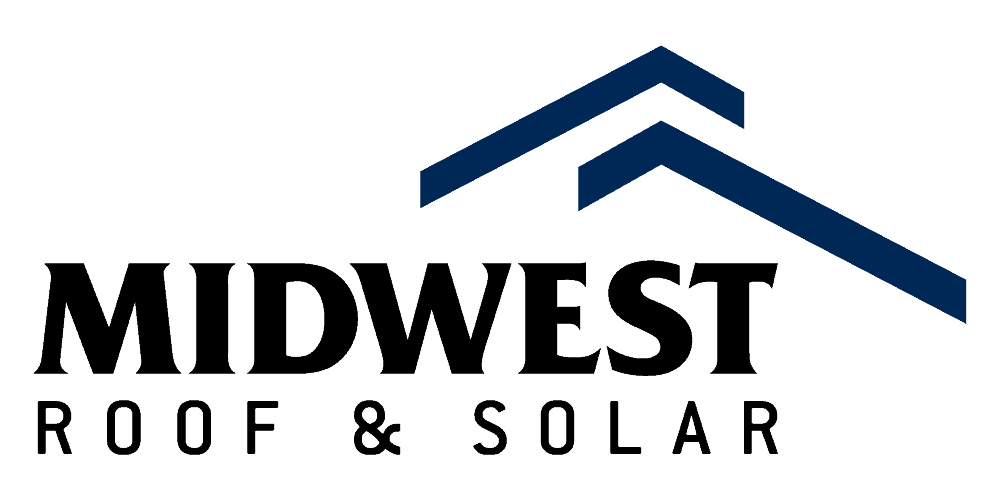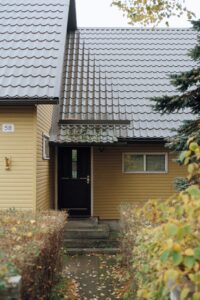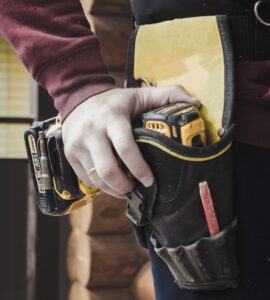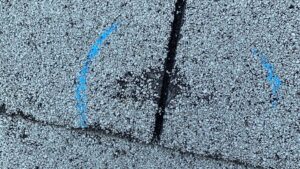Most homes’ roofs are made up of many parts that work together to keep your Minneapolis roof functioning, not just the shingles you see when looking up at the structure. It is this combination of materials that helps to provide structural integrity, waterproofing, and overall protection for every other part of your home under the roof. Perhaps the most important component of your roof’s structure is the decking. The roof deck isn’t something you can see from just looking at the top of your home, but it is one of the most important components to maintain as it is the foundation of the entire roof system.
Roof Decking Basics
Roof decking, sometimes called roof sheathing, is the bottom most layer of the roof structure. It is made up, typically, of wooden boards. When your home is being framed out, this is the material that is placed over the structure to create the actual roof.
The roof decking is what the other components to your roof system attach to, including the underlayment and the shingles themselves. For many reasons, this area of the roof has to be kept in the best possible condition.
What Materials Are Typically Used in Roof Decking?
There are two types of roof decking commonly used on residential properties. The first type is called plank decking. Prior to the development of plywood, most roofs had plank decking because it was readily available and highly functional. Plank decking is usually made of long and rectangular wooden boards. Most are sized either as 1 x 6 or 1 by 8. If your home is older, you may still find plank decking used under it. Typically, it looks like wood flooring boards are laid one next to the other.
Sheet decking is the more common option. Sometimes called sheathing, this type of roofing decking is made from flat sheets of wood. You will typically find one of two types of sheet decking used on roofs.
The first time is called OSB or oriented standard board. This is the most common type used on roofs in most residential homes. The sheet itself is made up of compressed wood strips and pieces. They typically measure 7/16″ thick and are sold as a flat sheet that is placed on the surface. This particular type of sheet decking is more affordable, and that’s why it is commonly used.
The second option is plywood. It’s available in numerous thicknesses ranging from 3/8” to ¾” thick. Your roofer will choose the right size based on the span of the rafters on the home. Plywood is used readily in many homes and is not hard to find for most applications. It does typically cost a bit more than OSB, though.
What does roof decking do?
Roof decking is the protective structure of your home. It is these pieces of roof that help to create the roof structure of the property. That means that it works to keep moisture out. It helps to minimize energy loss. It also helps to protect anything else in your home from the elements. It is a critical component of your entire roofing system.
Also, note that roof decking is also essential for creating a sturdy, reliable structure for roofing material to be placed. That may include shingles, metal roofs, or other types of materials you choose. If this foundation isn’t in good condition, that could mean that the entire roof system is not durable and reliable.
Roof decking life span in the Minneapolis area
Most roofs will last for about 20 years, though some can be longer. The roof decking, though, can often last much longer. Depending on the quality and how well kept it is, these wood components could last 100 years or more. The key is maintenance and upkeep. If and when the roof decking is exposed, being able to make repairs right away is critical to preserving this lifetime.
When Does Roof Decking Need to Be Replaced?
Noting the importance of a roof deck that is in good condition, the question is, how do you know if it’s protected? It can be hard to notice this, especially if you are not a trained professional. That’s why an annual inspection of the roof tends to be one of the best things you can do to preserve this area. Your roofer will be able to spot damage to shingles, which could expose the roof decking.
Here are a few other common signs that the roof decking needs replacement:
- There are leaks. If you have leaks in your attic or home, there’s a good chance there’s damage to the roof decking. Most often, the decking is covered by a paper or plastic covering that prevents water from getting into it. Leaks mean that it is not working as it should.
- Interior stains on ceilings. You may not notice an active leak. However, there could be areas where there are stains on the ceiling surface that indicate there was a leak present. If you notice any type of discoloration on the ceiling in the upper floors of the home, this could be evidence of damaged decking.
- Mildew or mold in the attic. You may also notice the presence of mold or mildew in the attic, especially in the upper portion of the space. If you notice this, or the insulation in the attic has water damage, that means the roofing structure is leaking.
- Sagging roofing. If you look at the structure of the roof (either from the outside or interior in the attic) and notice any type of sagging, that could indicate the presence of roof decking damage. The wood may become saturated with water, allowing the entire structure to sag. This warrants emergency repairs.
- Holes in the roof. Any damage to the roof itself means the structure of the decking is compromised. This could be from hail, a tree striking the surface, or missing shingles.
Recognizing the signs of damage to roof decking is important. The sooner you get help for this, the faster you can protect your home from risk, including costly damage from a collapsed ceiling.





